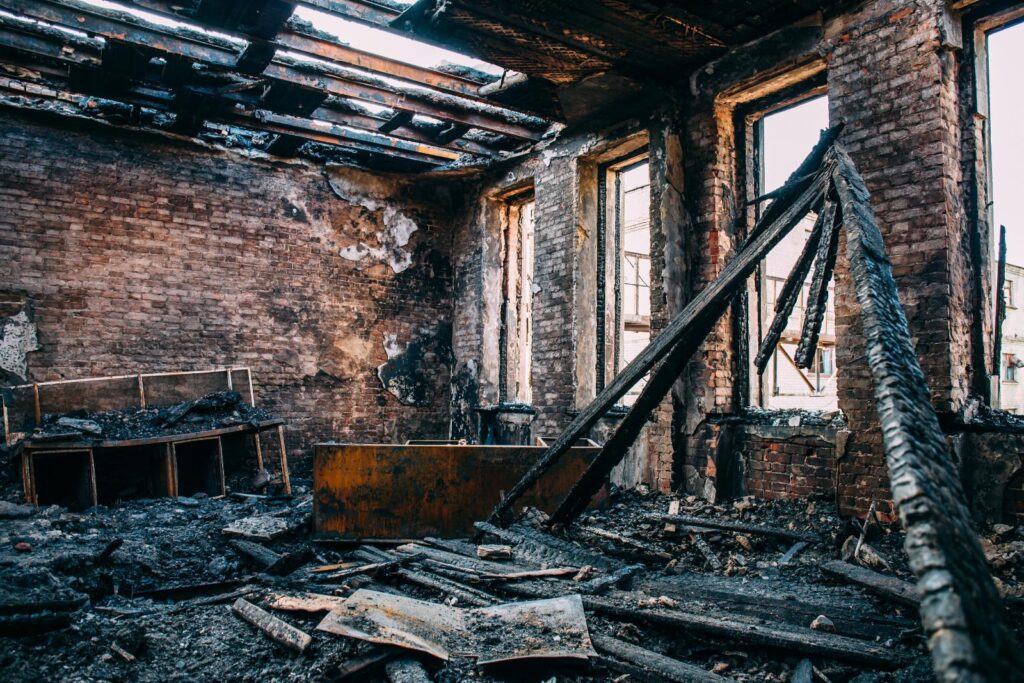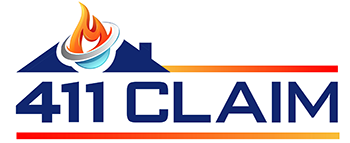
Contents
Fire restoration is like traversing a maze; one wrong turn can lead to further complications. By following step-by-step procedures, you guarantee a thorough and effective restoration process. Each step is designed to address specific issues, from evaluating damage to preventing future risks. Ignoring these methods can jeopardize safety and increase recovery time. Understanding the intricacies of these procedures is essential to safeguard your property and well-being. What key factors should you consider in this complex journey?
Key Takeaways
- Ensures systematic handling of fire risks, reducing potential for further damage and health hazards.
- Supports compliance with local building codes, enhancing safety and legal adherence.
- Aids in the thorough assessment of structural integrity, identifying critical safety concerns.
- Promotes effective cleaning and odor removal, restoring emotional well-being and personal space.
- Establishes a foundation for future fire prevention strategies, fostering community security and resilience.
Understanding the Importance of Fire Restoration Procedures
When a fire strikes, understanding the importance of fire restoration procedures can greatly impact the recovery process. You need to recognize the various fire risks that can arise, affecting not just your property but also your emotional well-being.
Following precise restoration guidelines guarantees that you address these risks methodically, minimizing further damage and reducing the potential for health hazards like smoke inhalation or mold growth.
Each step in the restoration process is vital. Begin with safety assessments, followed by damage containment and debris removal.
Next, initiate thorough cleaning and sanitization to eliminate harmful residues. Finally, implement repairs and reconstruction, adhering to local building codes.
By embracing these procedures, you foster a sense of security and belonging in your community, knowing that you’re not just restoring a structure, but also reclaiming your space.
Assessing Fire Damage: The Initial Steps
Before you begin the restoration process, it’s crucial to conduct a thorough assessment of the fire damage.
Start with an initial evaluation of the affected areas. Identify structural integrity concerns, such as weakened walls or ceilings, which could pose risks during restoration.
Next, perform a detailed damage assessment to document all affected materials, including flooring, insulation, and personal belongings.
Use a checklist to guarantee you cover all aspects, noting both visible and hidden damage, like smoke residues or water from firefighting efforts.
Take photographs for insurance claims and future reference.
This methodical approach not only helps in prioritizing restoration efforts but also fosters a sense of community among those involved, as everyone works towards a common goal.
Safety First: Ensuring a Secure Environment
Securing a safe environment is paramount once you’ve assessed the fire damage. First, gather your personal protective equipment (PPE), including gloves, masks, and goggles. These items protect you from hazardous materials and airborne contaminants that may linger after the fire.
Next, implement evacuation procedures if you haven’t already. Make sure that everyone in the vicinity is aware of the safest exits and has a designated meeting point outside the affected area.
As you begin restoration, keep the area well-ventilated to reduce inhalation risks. Regularly check for structural integrity, as weakened walls and ceilings can pose additional hazards.
Establish a clear communication line with your team, fostering a sense of belonging and shared responsibility. Encourage everyone to report any unsafe conditions or concerns.
Water Damage and Fire: Addressing Dual Threats
When addressing fire damage, you must also consider the significant impact of water used during firefighting efforts.
Understanding how water interacts with fire residues is vital, as it can complicate the restoration process.
Timely action is essential to mitigate further damage and guarantee effective recovery.
Understanding Water-Fire Interaction
Although fire and water are often seen as opposing forces, their interaction during restoration processes can create complex challenges that require careful management.
Understanding water behavior is essential, as it notably influences fire dynamics. When extinguishing a fire, water can seep into materials, leading to hidden damage that complicates restoration. You need to recognize how water’s movement affects structural integrity and mold growth potential.
Additionally, the temperature and pressure of water can alter fire’s behavior, impacting how flames spread and where damage occurs. By grasping these interactions, you can formulate effective strategies to mitigate both water and fire damage, ensuring a thorough restoration that addresses all threats.
This methodical approach fosters a sense of belonging in the restoration community.
Impact on Restoration Process
As you navigate the intricacies of fire restoration, it’s vital to recognize that the dual impact of water and fire damage can considerably complicate the overall restoration process.
Each element demands immediate attention, affecting the restoration timeline. Water damage can lead to mold growth, while fire damage may compromise structural integrity.
You’ll need to coordinate both water extraction and smoke damage remediation simultaneously, which requires meticulous planning and execution.
Emotional support during this stressful time is important; knowing you’re not alone can ease the burden.
Importance of Timely Action
Addressing the dual threats of water and fire damage requires swift and decisive action to mitigate further complications. A timely response not only preserves your property but also safeguards your community’s wellbeing. When you encounter such disasters, being prepared can make all the difference.
| Action Steps | Importance |
|---|---|
| Assess Damage | Identify the extent of the threat |
| Notify Professionals | Guarantee expert intervention |
| Document Evidence | Support insurance claims |
| Implement Containment | Prevent further damage |
| Restore and Repair | Restore functionality and safety |
Disaster preparedness is vital. By recognizing the importance of acting quickly, you enhance your resilience and contribute to a stronger community. Don’t hesitate—your timely actions can prevent a minor issue from escalating into a major crisis.
Cleaning and Removing Debris: A Critical Phase
When a fire occurs, cleaning and removing debris becomes a critical phase in the restoration process. Proper debris removal is essential to guarantee safety and facilitate further restoration efforts.
Start by evaluating the area and identifying hazardous materials, such as charred wood or broken glass. Use appropriate personal protective equipment to safeguard yourself during the cleanup.
Next, employ effective cleaning techniques tailored to different surfaces. For non-porous materials, chemical cleaners can effectively eliminate soot and odors. Meanwhile, porous materials may require deep cleaning or replacement to guarantee thorough restoration.
Methodically sort debris into salvageable and non-salvageable categories, disposing of the latter responsibly. Document your findings for insurance purposes, fostering transparency and trust.
Drying Out Affected Areas: Techniques and Tools
To effectively restore areas affected by fire, drying out moisture is essential, since lingering dampness can lead to mold growth and structural damage. You’ll need to employ various dehumidification methods to guarantee thorough drying. Start by measuring moisture levels with moisture meters to identify problem areas.
| Technique | Tools Needed | Purpose |
|---|---|---|
| Air Circulation | Fans, Blowers | Increases evaporation rate |
| Dehumidification | Dehumidifiers | Extracts moisture from air |
| Heat Application | Heat Drying Units | Accelerates drying process |
| Surface Drying | Towels, Mops | Removes surface moisture |
Utilizing these techniques and tools will help you restore affected areas efficiently. Remember, thorough moisture removal is vital for preventing future issues and guaranteeing a safe environment for everyone involved.
Repairing Structural Damage: Key Considerations
When repairing structural damage, you must first assess the integrity of the affected areas to guarantee safety and stability.
After evaluating the damage, you’ll choose appropriate repair materials that meet building codes and provide long-lasting support.
This methodical approach is essential for effective fire restoration and preventing future issues.
Assessing Structural Integrity
As you begin evaluating structural integrity after a fire, it is crucial to identify any damage that could compromise safety. Conduct thorough structural assessments to pinpoint weakened areas. Focus on load-bearing components, as they’re critical for maintaining the building’s stability. Integrity evaluations should include inspecting beams, columns, and walls for signs of warping or cracks.
| Damage Type | Recommended Action |
|---|---|
| Cracks in Walls | Inspect for depth/width |
| Warped Beams | Measure deflection |
| Compromised Columns | Engage a structural engineer |
Choosing Repair Materials
After evaluating the structural integrity, selecting the right repair materials becomes a pivotal step in restoring the building’s safety and functionality.
You’ll need to assess various repair material types, ensuring they meet the specific demands of your project. Prioritize selecting durable materials that can withstand future stresses and environmental factors.
Consider factors like moisture resistance, thermal stability, and compatibility with existing structures. It’s crucial to consult with experienced professionals who can guide you in making informed choices tailored to your unique needs.
Smoke and Odor Removal: Specialized Techniques
Although smoke and odor removal can be challenging, employing specialized techniques is vital for restoring indoor air quality after a fire incident.
You’ll want to start with advanced cleaning methods that target soot and smoke residues, such as HEPA vacuuming and wet cleaning. These techniques help lift particles that regular cleaning might miss.
Next, implement odor neutralization techniques, like ozone treatment or hydroxyl generators, which break down odor molecules at a molecular level.
Always guarantee proper ventilation during these processes to maintain safety and effectiveness.
Additionally, consider using encapsulants to seal in stubborn odors on porous surfaces.
Each step in this methodical approach not only enhances the air quality but also contributes to a sense of belonging by creating a comfortable and healthy living environment.
Preventing Future Risks: Fire Safety Measures
To effectively prevent future fire risks, it’s crucial to implement thorough fire safety measures in your home or business.
Start by developing extensive fire prevention strategies, which include regular inspections of electrical systems and proper storage of flammable materials. Confirm that your smoke detectors are functional and replace batteries at least annually.
Invest in reliable safety equipment, such as fire extinguishers, and place them in easily accessible areas. Make certain everyone knows how to use them.
Conduct regular fire drills to familiarize occupants with evacuation routes and procedures.
Additionally, create a fire safety plan that outlines roles and responsibilities during an emergency. Encourage open discussions about fire safety, fostering a culture of preparedness and awareness.
The Role of Professionals in Fire Restoration
In the aftermath of a fire, professionals play a critical role in restoring both safety and functionality to your property. Their restoration expertise guarantees that every aspect of the damage is addressed methodically.
These experts conduct extensive assessments, identifying hidden structural issues and potential hazards that you might overlook. Through expert interventions, they implement targeted strategies to mitigate further damage, including water extraction, smoke removal, and mold prevention.
Moreover, their specialized knowledge allows for the efficient restoration of damaged materials, ensuring compliance with safety regulations and standards. By using advanced equipment and techniques, these professionals not only restore your property but also enhance its resilience against future incidents.
Collaborating with these skilled individuals fosters a sense of security and belonging, knowing your space is being handled with care and precision. Relying on their expertise paves the way for a successful recovery, allowing you to return to a safe environment.
Summary
Just as a phoenix rises from the ashes, following step-by-step fire restoration procedures allows your space to transform and thrive anew. By meticulously evaluating damage, prioritizing safety, and engaging professionals, you not only restore your property but also cultivate resilience against future threats. Embracing this methodical approach guarantees compliance with codes and promotes emotional recovery, enabling you to reclaim your sanctuary. In this journey, each step is a building block toward a safer, more secure future.
Recent Posts
Pricing Insights for Damage Restoration Services
When unexpected events disrupt your life, steering through the costs of damage restoration can feel
Budgeting for Blaze Cleanup: A Trusty Guide
Budgeting for blaze cleanup is like steering through a maze—complex and overwhelming but attainable with
Top Storm Damage Repair Techniques for Homeowners
When storms release their fury, the aftermath of storm damage can feel overwhelming, much like
